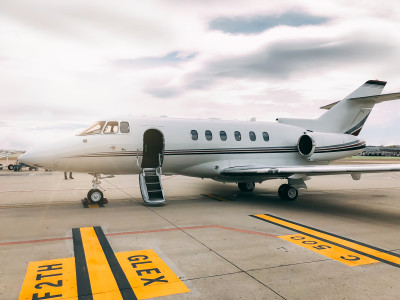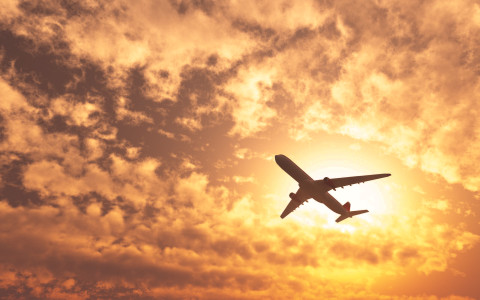
The aviation industry is at the threshold of a transformative era, with innovations, sustainability initiatives, and robust market growth set to redefine air travel in the coming decades. From technological breakthroughs to expanding global connectivity, the future of aviation holds immense potential. Among the countries poised to lead this evolution is India, which is rapidly emerging as a key global player in the aviation space. The convergence of economic growth, rising consumer demand, and forward-thinking policies has positioned India to take center stage in the skies of tomorrow.
India’s Soaring Aviation Growth
Post-pandemic, India’s domestic air traffic has not only rebounded but also surpassed pre-COVID levels, demonstrating the industry’s resilience and the rising appetite for air travel. According to the Boeing Commercial Market Outlook 2023, South Asia is expected to add over 2,700 new airplanes over the next two decades, with 90% of these destined for India. This surge is underpinned by several key drivers:
• A burgeoning middle class with rising disposable incomes.
• Increased demand for domestic and international connectivity.
• E-commerce expansion fueling cargo transport.
• Strategic government initiatives improving regional connectivity.
With a projected need for around 37,000 new pilots and 38,000 aircraft maintenance engineers, the demand for skilled professionals in the Indian aviation sector is at an all-time high. Airlines are aggressively expanding their fleets, creating opportunities across all aviation verticals.
Aviation: A Catalyst for Economic and Social Development
Aviation is more than a transportation system; it is a driver of socioeconomic progress. Globally, commercial aircraft take off over 400 times per hour, underscoring the industry's critical role in global connectivity. The International Civil Aviation Organization (ICAO) forecasts a 4.3% annual growth in air transport demand over the next 20 years. By 2036, the industry could support 15.5 million direct jobs and contribute $1.5 trillion to the global economy. Factoring in tourism, the figures could balloon to 97.8 million jobs and $5.7 trillion in GDP.
As flight operations rise, so will cargo movements. By the mid-2030s, up to 200,000 flights could take off and land daily across the globe, with air cargo playing a pivotal role in global commerce. This growth offers developing economies like India a unique opportunity to integrate deeper into the global supply chain.
Challenges in a Rapidly Expanding Industry
Despite the positive outlook, the aviation industry faces multiple challenges. Chief among them are infrastructure constraints, airspace congestion, environmental sustainability, and a growing need for skilled personnel.
Airports, the backbone of the aviation network, are already functioning near full capacity. Although 51% of the global population resides within 100 km of an international airport, the anticipated doubling of air traffic will push current infrastructure to its limits.
Other significant challenges include:
Air Traffic Management: Increasing flight volumes necessitate modernization of air traffic control systems.
Sustainability: With growing awareness of climate change, the industry faces pressure to reduce its carbon footprint.
Talent Shortage: The gap in trained pilots, engineers, and airport staff could hamper growth.
To remain sustainable and efficient, the industry must adapt quickly through collaboration, innovation, and policy support.
Sustainability and Innovation: The Cornerstones of the Future
Sustainability is rapidly becoming the cornerstone of the aviation sector's long-term strategy. With growing environmental regulations and increasing pressure from consumers and climate advocates, aviation must adopt greener practices. The future will be shaped by several key innovations:
- Electric and Hybrid Aircraft: Numerous companies are investing in electric and hybrid propulsion systems that reduce emissions.
- Sustainable Aviation Fuel (SAF): Biofuels and hydrogen-based alternatives are being developed and tested to replace conventional fossil fuels.
- AI and Big Data: These technologies can optimize flight paths, manage airspace congestion, and improve predictive maintenance.
- Automation and Robotics: From self-check-in kiosks to autonomous baggage handling systems, automation will enhance operational efficiency.
With these advancements, the industry can strike a balance between growth and environmental stewardship.
The Role of Airports in Tomorrow’s Aviation Ecosystem
Airports are more than just transit points; they are key enablers of aviation growth. In the future, airports will need to evolve into smart, sustainable, and efficient hubs capable of handling increased traffic.
To meet the growing demand, the following upgrades are vital:
Smart Infrastructure: Real-time data analytics, IoT-based monitoring, and AI-driven decision-making will streamline operations.
Green Airports: Use of renewable energy, sustainable construction materials, and waste management systems will be integral.
Passenger-Centric Services: Biometric check-ins, personalized services, and faster security processes will enhance user experience.
India’s UDAN (Ude Desh ka Aam Nagrik) scheme is a case study in expanding airport accessibility and increasing air travel affordability. Similar efforts worldwide will determine how well the industry manages future traffic.
Emerging Career Opportunities in Aviation
With massive growth on the horizon, career opportunities in aviation are expanding rapidly:
Pilots: As fleets grow, airlines will need thousands of skilled pilots.
Aircraft Maintenance Engineers (AMEs): Critical for ensuring aircraft airworthiness and safety.
Cabin Crew: As passenger volumes increase, demand for trained, customer-friendly crew members will rise.
Air Traffic Controllers: Required to handle increasing flight volumes with precision and safety.
Aviation Management Professionals: Crucial for overseeing airport operations, logistics, and strategic planning.
Institutes like Indian Aerospace & Engineering (IAE) Mumbai are leading the charge in training aviation professionals, offering programs approved by DGCA and aligned with global standards. Such institutions play a crucial role in preparing the workforce of the future.
The Digital Transformation of Aviation
Digitalization is revolutionizing the aviation landscape. Airlines and airports are embracing digital tools to improve efficiency, safety, and the customer experience:
Cloud Computing: Facilitates seamless data sharing and collaboration.
Blockchain: Enhances data security, baggage tracking, and maintenance records.
Digital Twins: Virtual replicas of aircraft and airport systems allow real-time monitoring and simulation.
These innovations will help the aviation industry anticipate issues, streamline operations, and deliver a seamless travel experience.
Conclusion: Soaring into a Sustainable and Smart Future
The aviation industry stands at the intersection of innovation and growth. As we look ahead to 2041, the trends shaping the skies of tomorrow will be defined by a blend of sustainability, technological advancement, and human expertise. India, with its booming market, policy reforms, and expanding infrastructure, is well-positioned to be a global aviation powerhouse.
However, realizing this vision will require concerted efforts from all stakeholders—governments, educational institutions, industry players, and consumers. By embracing innovation, prioritizing sustainability, and nurturing talent, the aviation sector can unlock a future where the skies are not only busy but also smarter, cleaner, and more connected than ever before.
The future of aviation is not just in the air; it's in our hands. Let us navigate it responsibly, creatively, and collaboratively.

How the Aviation Industry is Set for Unprecedented Growth in the Next Decade
Education
The global aviation industry is poised for a transformational decade marked by exponential growth, technological innovation, and expanded connectivity. As economies rebound post-pandemic and air tr
